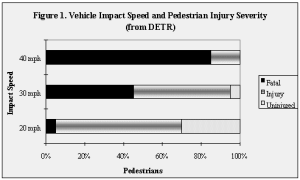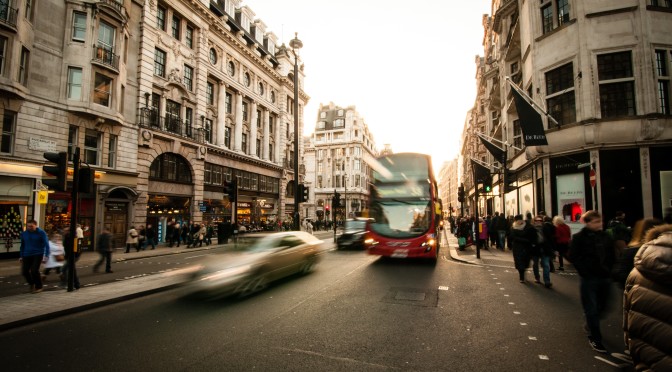 There are certain things just about “everyone” does when driving that makes driving less safe for just about everyone. Speeding is one of those things. It makes near-misses turn into collisions, it turns mild collisions into severe collisions, and it turns severe collisions into fatal ones.
There are certain things just about “everyone” does when driving that makes driving less safe for just about everyone. Speeding is one of those things. It makes near-misses turn into collisions, it turns mild collisions into severe collisions, and it turns severe collisions into fatal ones.
I’ve written about dozens of collisions that could potentially have been survivable, had one or both drivers involved not been speeding. I’ve also written extensively about car technologies that are helping people survive collisions that would have been universally fatal just a decade or two ago on our roads, such as side impact intrusion resistance in cars, SUVs, minivans, and small vehicles. This is a topic that deserves as much attention as we can give it as a society.
How does speeding affect pedestrians?
Today, however, I’m going to focus on how speeding affects a large segment of the population that doesn’t have the liberty of steel safety cages, collapsible steering wheels, seat belts, or frontal or side airbags. I’m talking about pedestrians, and by extension, cyclists, children, the infirm, and the elderly. In other words, everyone who shares the road with motorized traffic without the protection inherent in most motorized vehicles. These are our spouses, children, brothers, sisters, fathers, mothers, best friends, and coworkers. They could very easily be someone you love. And this is what happens to them when you, or someone like you, is speeding and hits them.

The chart to the left is sourced from a 1999 NHTSA report from the US Department of Transportation titled “Literature Review on Vehicle Travel Speeds and Pedestrian Injuries.” The long and short of it is that the faster motorized vehicles are traveling, the more likely they are to kill or seriously injure the people they run into.
The chart in particular is one of many studies conducted on the gruesome, but particularly important question of just how quickly a car, truck, SUV, or minivan needs to be moving, on average, before it seriously injures or kills a pedestrian unfortunate enough to stray into its path. The numbers vary slightly from one study to the next, but the general idea holds similar across just about all of them, so let’s take a closer look at the chart and answer that question together.
What are my odds of surviving if I’m hit by a car at 20 mph?
The UK DOT analyzed injury and death rates for pedestrians hit by vehicles at 20 mph, 30 mph, and 40 mph. They found that at 20 mph, or at the typical speed limit in school zones in the US, roughly 5% of pedestrians would not survive a vehicular collision. Let’s use a sample of 20 random people (young adults, children, middle-aged men and women, and seniors) to make the percentages more understandable.
In our hypothetical 20 mph collision, a 5% fatality rate means 1 out of 20 individuals would die, whether at the scene or at the hospital. 65%, or 13 out of 20, would survive with some injury, such as a broken leg or arm. A full 30% would walk away without any injuries whatsoever, or 6 out of our sample 20 people. Those are pretty good odds; you’d have a 95% chance of surviving what could otherwise be the last day of your life.
The picture changes dramatically at 30 mph; just 10 mph more.
What are my odds of surviving if I’m hit by a car at 30 mph?
Now we’re at the typical speed limit for urban and suburban areas in many parts of the US. Keep in mind most people in 30 mph zones aren’t going to be traveling at 30 mph; they’re going to be traveling faster. But if they obeyed the speed limit, here’s what would happen, on average, if they hit random members of our random sample of 20 people.
First of all, the death rate jumps to 45%. A full 9 out of 20 people would die, whether at the scene or soon afterward. Game over. No take backs, no do-overs. Just dead. Another 50% would be injured, or 10 out of 20 people. And a scant 5%, or just 1 out of 20 people, could expect to walk away without injury.
The difference is sobering. Think of it the next time you’re driving past a crosswalk, or better yet, crossing one on foot. If you’re hit at 20 mph, you’re going to have a bad day, but you’re almost guaranteed to survive to complain about it the next day. If you’re hit at 30 mph, it’s a coin flip as to whether you’re going to see your loved ones again, ever. Is it fair to give so much power over to someone who wanted to get somewhere, anywhere a few seconds earlier?
Of course, the picture gets still worse at 40 mph. In fact, it makes 30 mph look marvelous.
What are my odds of surviving if I’m hit by a car at 40 mph?
You’re likely to see 40 (or 45) mph speed limits on the outskirts of towns or on 2-4 lane roadways and expressways through large cities (e.g., Lake Shore Drive in Chicago or State Street or Harrison Avenue in Rockford, IL). They’re pretty common, and the odds are good that you can think of an area close to where you live with 40+ mph speed limits that doesn’t require going on the highway. Yet you can also probably think of a number of times when you’ve seen pedestrians attempting to cross such streets, with or without cross-walks. Here’s what would happen, on average, if 20 people were hit at these speeds.
To put it simply, nearly all of them would die at the scene. The death rate jumps to a near-conclusive 95%. That’s 19 out of 20 people, or pretty much everyone. That’s not the injury rate; it’s the death rate. The 20th person would be injured. That’s a 5% survival rate. There are very few diseases with 95% fatality rates (untreated Rabies is the only one most Americans have any real risk of coming across), but those are your odds of dying if you’re hit by a vehicle at speeds you’re likely to find in every city in the country.
Why do the odds of survival change so quickly when hit by a vehicle?
So let’s take a look at the survival odds. At 20 mph, there’s a 95% chance you’re going to survive being hit by a car. At 30 mph, those odds drop to 55%, or literally at about chance. At 40 mph, you have virtually no chance at 5%. The reasons behind these changes are related to kinetic energy, which increases much more quickly than velocity (the equation is KE, or Kinetic Energy, is equal to 1/2 * mass * v^2, or velocity * velocity). In other words, a small change in speed, or velocity, results in a large change in kinetic energy. The increase isn’t linear. Humans think linearly; if you get $100, you can do twice as much as you can if you get $50. But an awful lot of things in life aren’t linear, and the damage done by speeding is one of them.
Doesn’t this mean we should lower all speed limits, and that speeding is only a part of the problem?
It’s absolutely true that speed limits in a number of areas are already far too high. Neighborhood speed limits, for example, should be no higher than 20 mph; children playing in their front yards and crossing the streets with their parents deserve to live as much as those in front of schools during school hours. However, at least there are limits; the least we can do is follow them. Speeding isn’t the whole problem, but it’s the part of the problem we exercise the most control over as daily drivers.
When you exceed speed limits, you’re making a very direct decision to drop someone’s survival odds if they happen to come into your path. Of course, if you’re in a 40 mph zone and traveling at 40 mph, you’re still nearly guaranteed to kill anyone you hit, but at least you aren’t voluntarily increasing risk levels for anyone beyond the inherent designed risks at those sanctioned speeds. That’s not much comfort if you hit someone or if your loved one is hit at those speeds, but at least it’s an acknowledgment that you were following the DOT’s rules.
However, your responsibility increases exponentially if you’re speeding. If you’re doing 40 in a 30 or 30 in a 20, you’re reducing someone’s odds of surviving beyond the odds they already had. This is completely preventable, which makes it completely unacceptable.
The next time you think of speeding, please think of these figures. Even if you somehow avoid being a pedestrian all the time, your loved ones can’t. How far above the speed limit would you want someone to be traveling the next time they approached someone you cared about?
—
If you find the information on car safety, recommended car seats, and car seat reviews on this car seat blog helpful, you can shop through this Amazon link for any purchases, car seat-related or not. Canadians can shop through this link for Canadian purchases.

